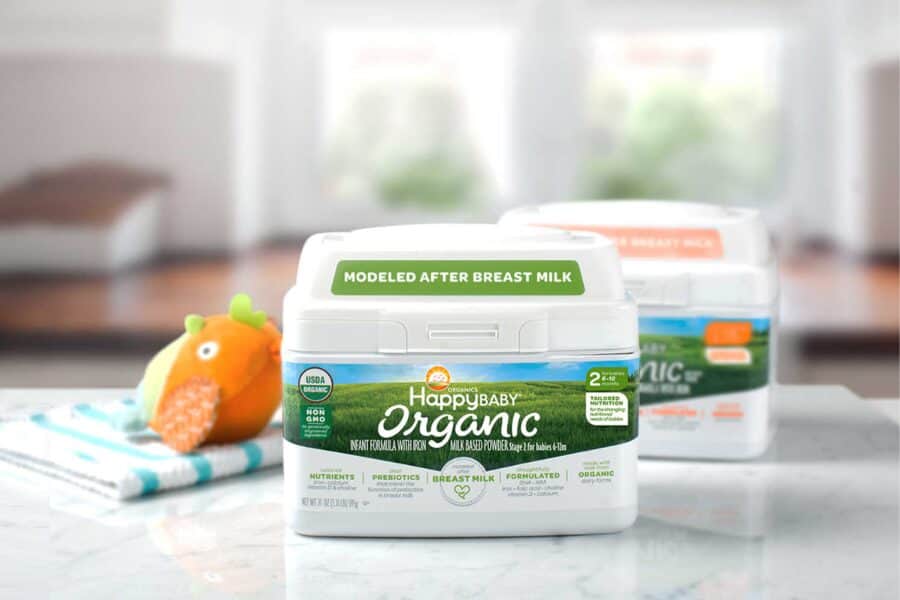Craving the comfort of mac and cheese but don’t want to deal with hassle of gluten-laden glucose spike? We can make that happen. If you’re sensitive or intolerant to gluten, you can still enjoy the creamy goodness of mac and cheese without worrying about the former.
Gluten-free mac and cheese is the latest addition to a growing list of comfort-food alternatives taking the market by storm. We all know the magic that a steaming bowl of mac and cheese brings—smiles, warmth, and pure satisfaction. And now you can replicate this recipe at home, without the burden of gluten.
Here’s everything you need to know about this recipe. We’ve also included a list of ways (and some five stars additions) to upgrade this classic recipe for you. Let’s go!
The Gluten in Mac and Cheese
Before we jump to the recipe, let’s take a moment to understand the integral “gluten” component in mac and cheese. Both pasta and the sauce can have glutenous components, as both are flour-based.
Gluten-free mac and cheese typically swaps out traditional wheat-based pasta for a gluten-free alternative, such as rice pasta, quinoa pasta, or corn pasta. The primary reason for this substitution is to cater to individuals who have celiac disease or a gluten intolerance, as consuming gluten can cause adverse reactions in these individuals.
The cheese sauce in gluten-free mac and cheese is usually made using gluten-free ingredients such as butter, milk (or a non-dairy alternative like almond milk or coconut milk), gluten-free flour (such as rice flour or cornstarch) as a thickener, and shredded cheese. Spices and seasonings like salt, pepper, and mustard powder are often added to enhance flavor.
List of Ingredients To Make Delicious Gluten-Free Mac And Cheese At Home

With a few easy steps and wholesome ingredients, you’ll be indulging in a creamy, cheesy delight that’s both satisfying and sustainable. Now, grab your apron and let’s get cooking gluten-free macaroni and cheese — because who says you can’t save the world one cheesy bite at a time?
Here’s everything you need to recreate this recipe at home:
- 2 cups gluten-free elbow pasta
- 2 tablespoons butter or olive oil
- 2 tablespoons gluten-free all-purpose flour
- 2 cups milk (dairy or plant-based)
- 2 cups shredded cheese (cheddar, mozzarella, or a blend)
- Salt and pepper to taste
Alright, here’s the delicious and eco-friendly recipe for mac and cheese gluten-free you have been waiting for.
How To Make Gluten-Free Mac and Cheese At Home
Once you have your hands on the ingredients, making gluten-free mac and cheese at home is easier than you might think! Here’s a simple recipe to get you started:
Step 1: Boil the Pasta

Bring a large pot of salted water to a boil. Add the gluten-free elbow pasta and cook according to the package instructions until al dente. Drain the pasta and set aside.
Step 2: Make the Base of the Cheese Sauce
In a medium saucepan, melt the butter (or heat the olive oil) over medium heat. Once melted, add the gluten-free all-purpose flour and whisk continuously for 1-2 minutes until it forms a smooth paste.
Step 3: Add the Milk & Cheese to the Base

Gradually pour in the milk while whisking constantly to avoid lumps. Cook the mixture for 2-3 minutes, stirring occasionally, until it thickens slightly.
Once the milk settles in, reduce the heat to low and gradually add the shredded cheese to the sauce that goes splendidly with gluten-free mac and cheese. Stir until the sauce is all melted and smooth. You can use cheddar, mozzarella, or a combination of your favorite cheeses for extra flavor.
Step 4: Season the Sauce with Salt & Pepper
Taste the cheese sauce and season with salt and pepper as needed. Keep in mind that the cheese adds saltiness, so start with a small amount of salt and adjust to your preference.
Step 5: Combine Pasta and Sauce

Add the cooked gluten-free elbow pasta to the cheese sauce and gently stir until the pasta is evenly coated with the creamy cheese sauce. Once you’ve mixed it thoroughly, transfer the gluten-free mac and cheese to serving bowls or plates. Garnish with freshly chopped parsley or a sprinkle of paprika for extra flavor.
How To Level Up Your Gluten-free Mac and Cheese Experience

Interested in turning a simple dish into a gourmet delight? We’ve got five different variations for you! Here’s how to take your gluten-free mac and cheese to the next level:
- Experiment with Add-Ins: Get creative with add-ins to enhance the flavor and texture of your mac and cheese. Try mixing in crispy bacon, caramelized onions, sautéed mushrooms, or roasted vegetables like broccoli or butternut squash. Fresh herbs like thyme or rosemary can also add a burst of freshness.
- Top it Off With Shredded Cheese: Give your mac and cheese a crunchy topping for added texture and flavor. Gluten-free breadcrumbs mixed with herbs and grated cheese make an excellent topping, or try crushed potato chips or crispy fried shallots for a unique twist.
- Upgrade the Sauce: Instead of a basic cheese sauce, consider making a béchamel sauce with gluten-free flour and adding a variety of cheeses for depth of flavor. Experiment with different cheese combinations like gruyere, fontina, or asiago for a more complex taste profile.
Why You Should Try Gluten-free Mac And Cheese At Home
Choosing gluten-free mac and cheese isn’t just about accommodating dietary restrictions; it’s about embracing a healthier, more inclusive approach to one of our favorite comfort foods. Here’s why you should consider making the switch:
- Digestive Health: For those with gluten intolerance or celiac disease, consuming gluten can lead to digestive discomfort and long-term health issues. Opting for gluten-free mac and cheese allows individuals to enjoy this classic dish without worrying about the negative effects on their digestive system.
- Taste and Texture: Contrary to popular belief, gluten-free mac and cheese can be just as delicious and satisfying as the traditional version. With advancements in gluten-free pasta technology and recipes, you can achieve the same creamy, cheesy goodness without compromising on taste or texture.
- Healthier Ingredients: Many gluten-free pasta options are made from alternative grains and legumes, which can offer nutritional benefits such as higher protein content and added vitamins and minerals. Additionally, gluten-free versions of mac and cheese often utilize healthier cheese options and eliminate unnecessary additives and preservatives.
Ready To Try Something New?
Can’t digest gluten? That’s okay. Even for classics such as mac and cheese, options exists. You can swap out the glutenous pasta for a non-glutenous alternative, and you can chuck the flour while making the sauce.
So, whether you’re managing gluten intolerance or simply hopping on new culinary adventures, gluten-free pasta is a delicious solution that makes sure no one misses out on their favorite dishes.
Ready to explore the big world of vegan, gluten-free recipes? We’ve got you covered. Check out Sustain-a-bowl recipe series!
Frequently Asked Questions (FAQs)
What does gluten-free mean?
Gluten-free foods are free from gluten, a protein found in wheat, barley, and rye. People with celiac disease or other gluten sensitivities must avoid gluten at all costs.
Does gluten-free mac and cheese taste the same as normal?
Gluten-free mac and cheese carries the same taste as store-bought mac and cheese, particularly when cooked properly. While the flavor may not be identical, it can be passed as the original recipe. However, the gluten-free pasta may have a slightly different texture — as some varieties are firmer or more delicate than traditional wheat-based pasta.
Does mac and cheese have gluten?
Mac and cheese typically contains gluten because it’s traditionally made with wheat-based pasta and flour-based sauce. The wheat flour used to make the pasta contains gluten, which gives it the characteristic chewy texture of macaroni dishes. However, you can easily make gluten-free mac and cheese by using pasta made from alternative grains like rice, corn, quinoa, or legumes.
Is gluten bad for your gut?
Gluten can be harmful to your gut if you have celiac disease or a gluten sensitivity. It triggers inflammation and damages the small intestine, leading to digestive issues like bloating, diarrhea, and nutrient malabsorption. Even for those without gluten-related disorders, reducing gluten intake can improve gut health for some individuals.








